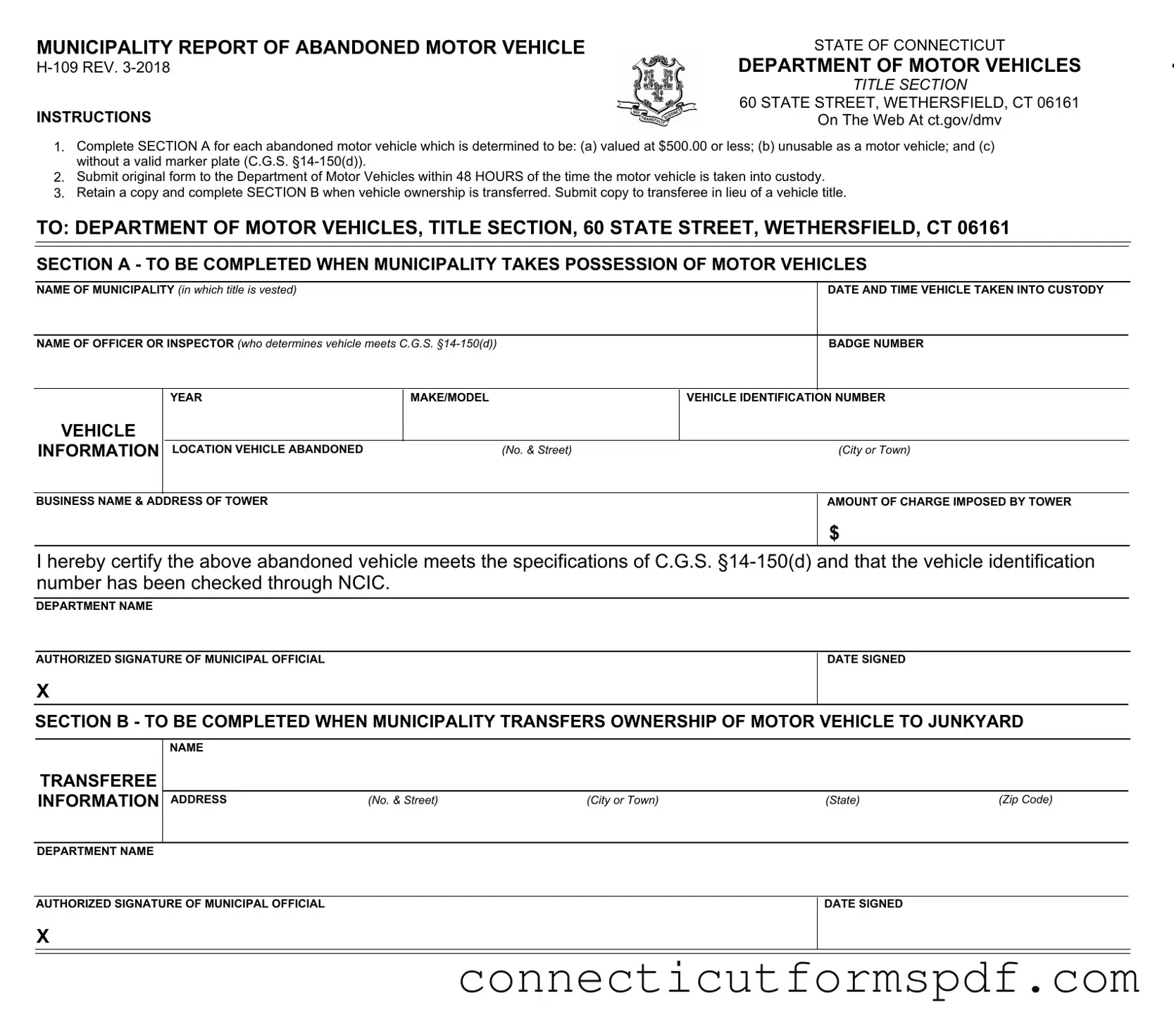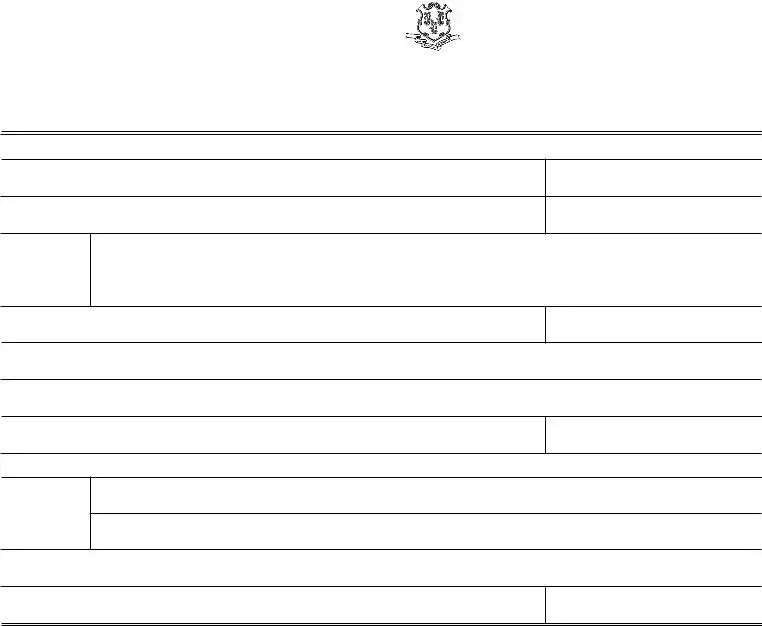Filling out the Connecticut H-109 form, which is designed for reporting abandoned motor vehicles, requires careful attention to detail. Unfortunately, there are common mistakes that people frequently make during this process. By understanding these mistakes, individuals can better navigate the complexities of the form and ensure compliance with state regulations.
Firstly, a significant error occurs when individuals fail to complete Section A thoroughly. This section is critical for documenting the details of the abandoned motor vehicle, including its condition and the circumstances of its abandonment. Failure to fill out this portion correctly can lead to inaccuracies in the state's records.
Secondly, within the context of timeliness, a common oversight is not submitting the original form to the Department of Motor Vehicles (DMV) within the required 48-hour window after the vehicle is taken into custody. This mistake can disrupt the proper processing and disposal of the vehicle.
Another area where mistakes are made involves the vehicle identification number (VIN). Incorrect recording of the VIN not only hampers the identification process but can also lead to legal issues. Moreover, neglecting to check the VIN through the National Crime Information Center (NCIC) as mandated can result in unintentionally overlooking a stolen vehicle.
Documentation of the vehicle’s condition and valuation is often underestimated. The form specifies that the vehicle must be valued at $500.00 or less and unusable as a motor vehicle. Misjudging these criteria can lead to improper handling of the vehicle under the statute.
Underpinning these specific mistakes is a broader set of errors that include:
- Erroneous or incomplete officer or inspector details, undermining the authority and validity of the report.
- Failure to fully document the tow charge imposed, which is critical for financial accountability and reimbursement procedures.
- Incorrect or missing municipality name where the title is vested, leading to jurisdictional ambiguities.
- Miscommunication or lack of follow-through in completing Section B when transferring the vehicle to a junkyard or other entity, which is essential for the completion of the vehicle's custody chain.
- Omitting the authorized signature of the municipal official, which is necessary for the document's legal validity.
By avoiding these common mistakes, individuals can ensure the smooth processing of abandoned motor vehicles in Connecticut. A detailed and accurate completion of the H-109 form is crucial not only for compliance with state laws but also for the efficient removal and processing of these vehicles, ultimately contributing to safer communities and environmental protection.

